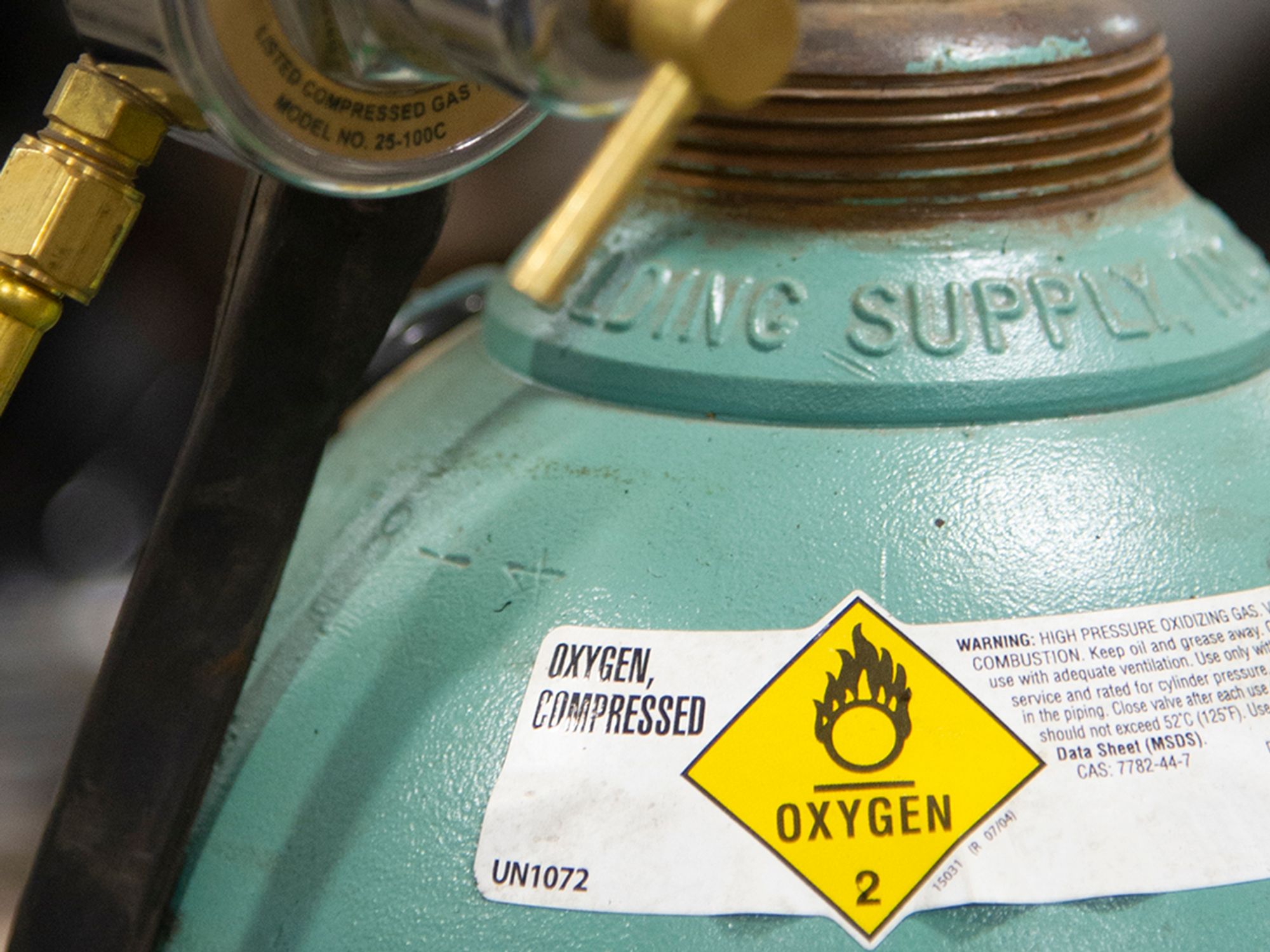Hoses

Fuel gas and oxygen hose must be easily distinguishable from each other. The contrast may be made by different colors or by surface characteristics readily distinguishable by the sense of touch.
Oxygen and fuel gas hoses must not be interchangeable. A single hose having more than one gas passage must not be used.
When parallel sections of oxygen and fuel gas hose are taped together, not more than four inches out of 12 inches can be covered by tape.
Inspect all hose in use at the beginning of each working shift. This includes hose carrying acetylene, oxygen, natural or manufactured fuel gas, or any gas or substance which may ignite or enter into combustion, or be in any way harmful to employees. Defective hose must be removed from service.
Hose which has been subject to flashback, or which shows evidence of severe wear or damage, must be tested to twice the normal pressure to which it is subject, but in no case less than 300 p.s.i. Defective hose, or hose in doubtful condition, must not be used.
Hose couplings must be of the type that cannot be unlocked or disconnected by means of a straight pull without rotary motion.
Boxes used for the storage of gas hose must be ventilated.
Keep hoses, cables, and other equipment clear of passageways, ladders, and stairs.
